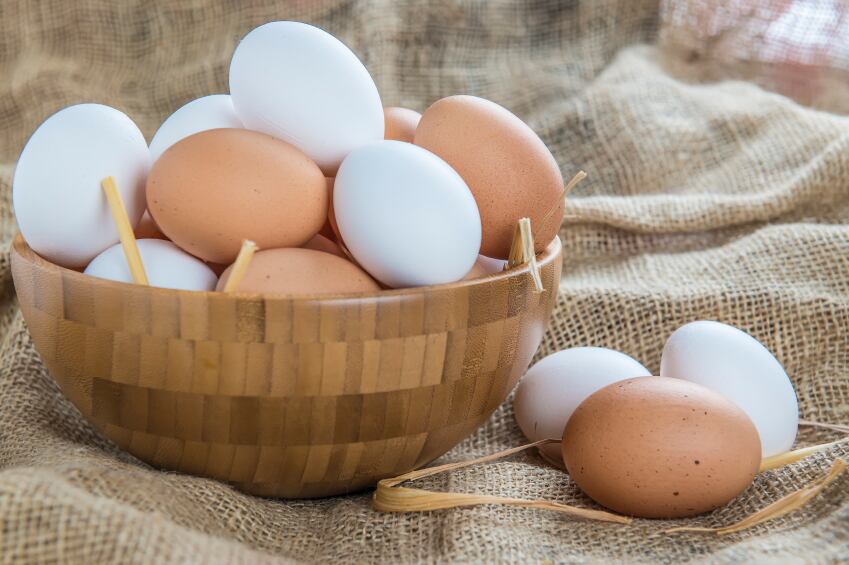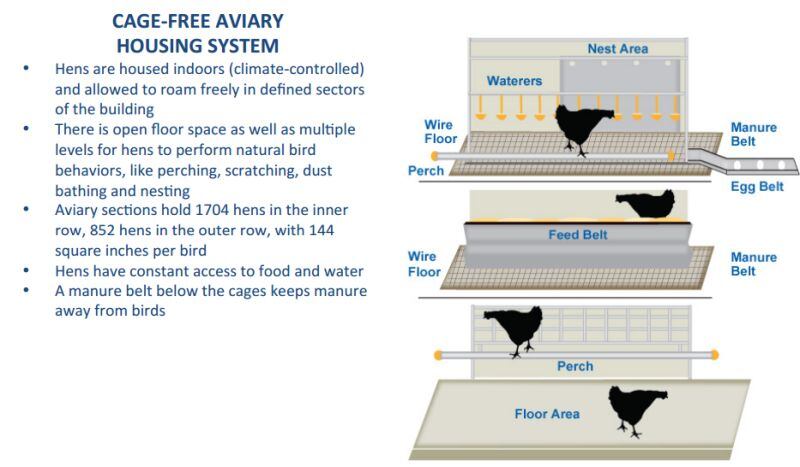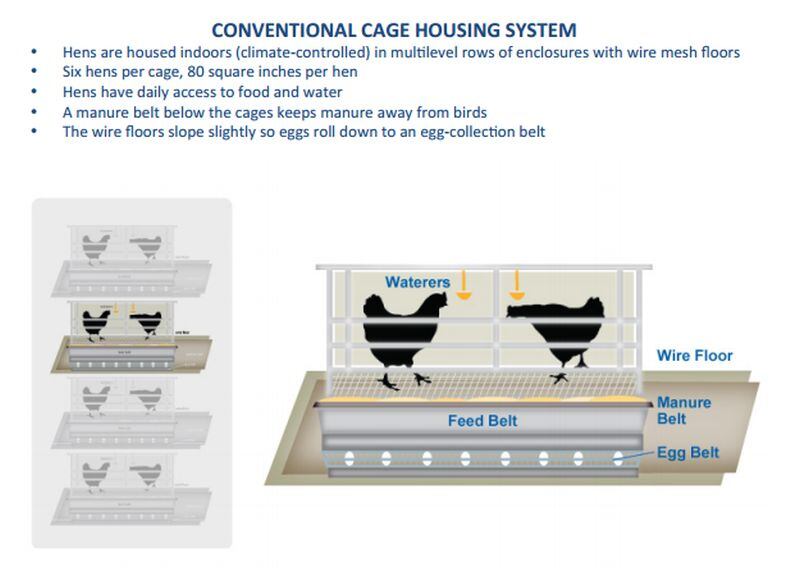UEP president and CEO Chad Gregory told FoodNavigator-USA that scores of companies have made big announcements about their future plans, but are not willing to pay extra now to help suppliers fund the costs of transitioning to cage-free production systems.
Egg farmers can’t just flip a switch on December 31, 2024
A cooperative of egg farmers representing the ownership of the vast majority of the nation's egg-laying hens, UEP estimates that more than 70% of US egg production will have to switch to cage-free by 2025 if the industry is to meet the commitments made by 219 grocery stores, food manufacturers and foodservice/restaurant chains.
“Currently, according to USDA, cage free [excluding organic] systems accounts for 8.3% of production or about 26 million egg laying hens," said Gregory.
"But by 2025, we’ll need 224 million cage free hens. The cost for cage-free is about $45 per bird and if you multiply that by the 200 million additional cage free birds we need, that’s $9bn in the next eight years.
“So if you’ve got a million bird farm, which is about average in this industry, that’s $45m to convert, so unless your customers want to start paying for the cage-free eggs now, which they don’t, you’re at a competitive disadvantage if you convert now.”
Demand at retail is not tracking cage-free commitments
He added: “We are stuck right now, and I really do mean stuck. Egg farmers have always been willing to do what their customers have wanted them to do, as long as the customer understands that there are costs involved and is willing to help the egg supplier get from here to there.
“They’ve made a commitment to be cage free in 2025, which in their minds means they’ll be willing to pay for cage-free on January 1, 2025.
“But egg farmers can’t just flip a switch on December 31, 2024, they need to start building these farms now, when their customers aren’t willing to pay for them. So the egg industry has basically stopped building cage-free barns because there is actually a surplus.”

According to USDA figures collated by the American Egg Board, per capita egg consumption is on a steady upward trajectory, with blips in 2007-9 (during the recession) and 2015 (when bird flu decimated parts of the industry), says Chad Gregory, president and CEO, United Egg Producers:
"Consumers across the world are gravitating to low-cost, high quality protein and egg is a phenomenal source, so we believe that per capita egg consumption will continue to increase."
Suppliers are not willing to build more cage-free facilities until customers are willing to go on this journey with them
At grocery stores, most consumers are still selecting cheaper, caged eggs, he said, so retailers are not ordering tons of cage-free products just yet: “Demand is not tracking cage-free commitments.”
When it comes to food manufacturers for whom eggs are just one ingredient in a recipe, some have been switching progressively to cage-free, whereas many retailers and foodservice companies are holding off until the deadlines they have set themselves, creating huge problems for egg farmers, he claimed.
In short, he said, the industry is at something of an impasse right now: “Suppliers are saying I am not willing to build more cage-free facilities until my customers are willing to go on this journey with me.”

"Egg farmers can’t just flip a switch on December 31, 2024, they need to start building these farms now, when their customers aren’t willing to pay for them. So the egg industry has basically stopped building cage-free barns because there is actually a surplus.”
Chad Gregory, president and CEO, United Egg Producers
Cage free production
So what’s involved in going cage-free for producers?

According to Gregory: “A conventional cage is about $15 a bird but there’s an additional $30 per bird for cage free. You can only get a third or even a half of the number of birds on the same farm, your labor costs are higher, mortality is higher because of feather pecking/cannibalism and the fact they can fly and jump and have more broken bones [rib and breastbone fractures], and more feed is wasted.
"The science suggests that from a welfare perspective, a sustainability perspective, a food safety perspective and from an economic perspective, cage-free is actually the worst system of the three [out of caged, cage-free, and enriched colony housing systems – according to a study commissioned by The Coalition for Sustainable Egg Supply].
However, Adele Douglass, founder of animal welfare advocacy group and certification body Humane Farm Animal Care, told FoodNavigator-USA that cage-free was a step in the right direction, adding: “I am very happy the industry is switching to cage free. It absolutely is a step in the right direction. How anyone could think otherwise shows their lack of knowledge about hen behavior.”

Hellmann’s: We recognized we would need to make an investment
Speaking to us about how Hellmann’s made the switch to cage-free for its mayo and mayo dressings three years ahead of schedule, marketing director Russell Lilly said brand owner Unilever had recognized how “scary” the proposition was for suppliers given that its commitment impacted 1.3 million hens and 331 million eggs annually.
But he added: “We understood that this required a significant investment of time and money and we set up multi-year contracts to give our suppliers the confidence to make the transition. We also recognized that we would need to make an investment [retail prices have not gone up] because it was the right thing to do. It's been a partnership from the beginning with our suppliers and the American Humane Association."
So has Hellmann’s move to cage-free eggs boosted its sales?
Lilly would not share numbers – and acknowledged that sales in the overall mayo category were “relatively flat” - but said consumers had responded positively in social media channels and increasingly wanted to know where their food came from and how it was produced.
Consumers had also responded “very positively” to Hellmann’s organic, and Carefully Crafted egg-free products, launched in 2016, he said.
“We still see big opportunities to drive growth in the shelf-stable mayo category as preferences change over time.”
Matthew Prescott, senior food policy director for the Humane Society of the United States, added: “People want animal welfare assurances when it comes to the food they buy, and Hellmann’s move shows just how in sync the company is with its customers.”
Whole Foods Market has just launched a new set of animal welfare standards for its private label 365 eggs:
- Cage-Free Plus: Birds live indoors with perches and shelter
- Outdoor Access: Birds have at least as much space outdoors as indoors
- Pasture-Raised: Birds have access to rangeland or grassland
- Mobile Houses on Pasture: Birds live outdoors with mobile houses for shelter
According to Whole Foods, these standards "go beyond cage-free by providing requirements for the comfort, physical safety and health of the hens. They require perches for laying hens and also prohibit the use of mammal or poultry byproducts in bird feed." Read more HERE.
